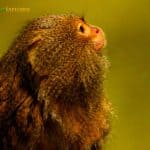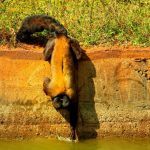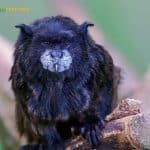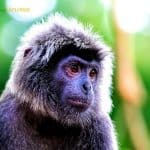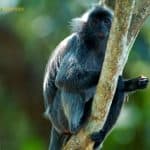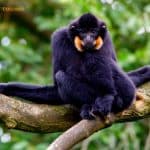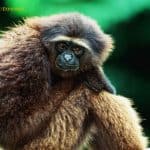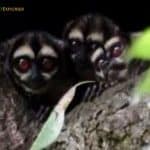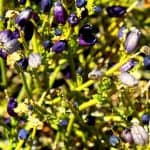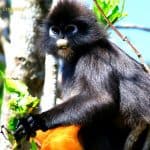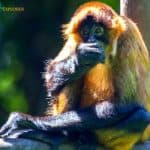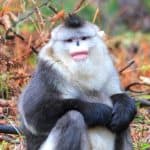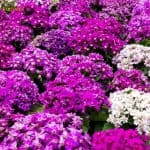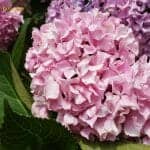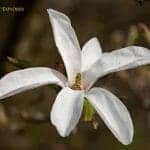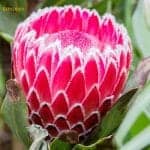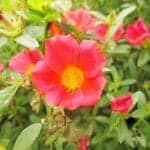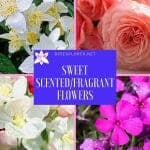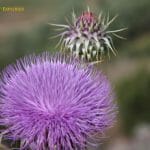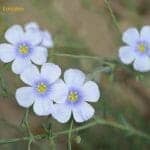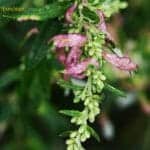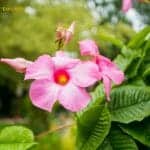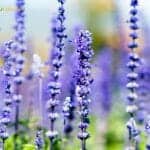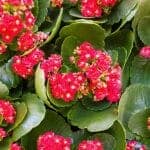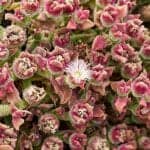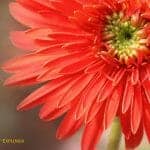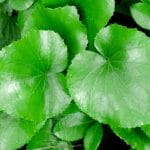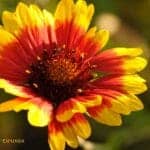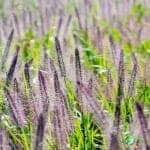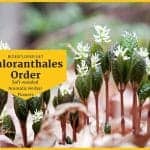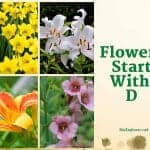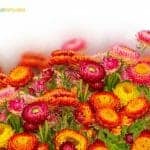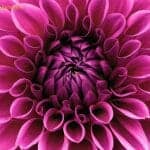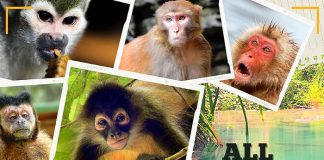Sun - search results
If you're not happy with the results, please do another search
Eastern Pygmy Marmoset
The eastern pygmy marmoset is a species of marmoset, a tiny New World monkey found in the southwestern Amazon rainforest. Notably, at just over 100 grams (3.5 ounces), the eastern pygmy marmoset is the smallest monkey and among the smallest primates in the world.
Buffy-tufted Marmoset
The buffy-tufted marmoset, also called the white-eared marmoset or buffy-tufted-ear marmoset is a New World monkey living in the forests of the Atlantic coast of southeastern Brazil. Unlike most marmoset monkeys, buffy-tufted-ear marmosets are mainly insectivorous, although their diet is generally carnivorous.
Brown-backed Bearded Saki
The brown-backed bearded Saki is one of 5 species of bearded Saki, a New World monkey species. Bearded sakis have a unique appearance. They are born with prehensile tails, which they retain for the first two months of their life. This allows them to cling to their mother's body. After this time, the tail becomes non-prehensile.
Black-mantled Tamarin
The black-mantled tamarin is a saddleback tamarin native to northwestern Amazonia in far western Brazil, eastern Ecuador, southeastern Colombia, and northeastern Peru. Leontocebus nigricollis live in small multi-male and multi-female social groups of 4 to 12 and occupy 30 to 50 hectares.
Tonkin Snub-Nosed Monkey
The Tonkin snub-nosed monkey, also known as the Dollman's snub-nosed monkey (Rhinopithecus avunculus), is a slender-bodied Old World arboreal monkey native to northern Vietnam.
Lesula
The lesula (Cercopithecus lomamiensis) is a species of Old-World monkey occurring in the Lomami Basin of the Congo. This monkey is described as having human eyes and a blue bottom.
Javan Surili
The grizzled surili (Presbytis comata) is a threatened species of Old World monkey native to the western half of Java, Indonesia, a biodiversity hotspot. The grizzled surili engages in 3 to 4 foraging and feeding fights throughout the day.
Pig-tailed Langur
The pig-tailed langur (Simias concolor), monotypic in the Simias genus, is a great Old-World monkey native to several small islands off Sumatra, Indonesia. Adult pig-tailed langurs have black faces and small, turned-up noses.
Macaques
Macaques are old-world monkeys hailing from the Asian continent, with a few from Africa. Currently, 23 species of living macaques are classified under the genus Macaca in the family Cercopithecinae, and 5 extinct macaques.
Heck’s Macaque
The Heck's Macaque (Macaca hecki) is a macaque native to Sulawesi, Indonesia. This Old-World monkey is diurnal. Due to their frugivorous diet, Heck's macaques will likely act as seed dispersers throughout their habitat.
Stump-tailed Macaque
The stump-tailed macaque, also known as the bear macaque, is an Old World monkey endemic to Cambodia, northeastern India, southwestern China, Myanmar, and Laos, from northwestern Peninsular Malaysia, Vietnam, and Thailand.
What Do Goldfinches Eat? Explore Goldfinch Diets, Hunting & Eating Habits
Goldfinches are mainly omnivores. Explore in detail what do Goldfinches eat by their types, hunting techniques, what eats Goldfinches & more.
Tenasserim Langur
Tenasserim lutung (Trachypithecus barbei) is a species of lutung. It occurs in Thailand and Myanmar. The species derived its common name from the Tenasserim Hills.
Tarai Gray Langur
The Tarai gray langur (Semnopithecus hector) is an Old-World monkey and was once thought to be a subspecies of the northern plains gray langur. The Latin name for Tarai gray langurs is inspired by Hector, the prince of Troy.
Silvered Langur
The silvery Lutung (Trachypithecus cristatus), also called the silvery langur or silvered leaf monkey is an Old-World monkey. Silvery Lutungs primarily live in trees.
Western Gorilla
Western gorillas also known as lowland gorillas, are herbivorous, primarily terrestrial apes that inhabit equatorial Africa's tropical rainforests. Like humans, western gorillas do not have a set breeding season, and female species menstruate every 28 days.
Northern Buffed-Cheeked Gibbon
The northern buffed-cheeked gibbon (Nomascus annamensis) is a species of crested gibbon recently discovered in Vietnam, Laos, and Cambodia. Northern buffed-cheeked gibbons live almost exclusively in trees and rarely leave the canopy's comfort and safety.
Common Chimpanzee
The chimpanzee, also known simply as the chimp, is a species of great ape native to the forests and savannas of tropical Africa. Chimpanzees and humans are thought to have a common ancestor that lived about eight million years ago.
Bornean Gibbon
Also known as the Müller's or gray gibbon, the Bornean gibbon is native to the Bornean Island, which is divided between the nations of Brunei, Malaysia, and Indonesia.
Spix’s Night Monkey
The Spix's night monkey (Aotus vociferans), also called the Spix's owl monkey, Colombian gray nocturnal monkey, and noisy night monkey is a species of night monkey native to South America.
Explore 15 Remarkable Adaptations of Ocean Inhabitants
In the realm of flora and fauna, the ocean presents itself as an immense tapestry of diverse habitats. Embark on a journey through the 15 most extraordinary adaptations of ocean creatures.
Turpentine Broom
Turpentine Broom is a shrub of the family Rutaceae. This species is native to the southwestern United States and northern Mexico deserts.
François’ Langur
The François langur, also called the white side-burned black langur, François leaf monkey, or Tonkin leaf monkey is a species of Lutung and the type species of its species group. The François langur is among the least studied langur species.
Central American Squirrel Monkey
The Central American squirrel monkey also called the red-backed squirrel monkey, is a squirrel monkey type native to the Pacific coast of Panama and Costa Rica. Central American squirrel monkeys spend most of their lives in the middle and upper layers of the tree canopy.
Black Snub-nosed Monkey
The black-and-white snub-nosed monkey, also called the Yunnan snub-nosed monkey, is a large black-and-white primate living only in Yunnan Province in southern China, where it is known to the local population as the Yunnan golden-haired monkey. The species gets the "snub-nosed" part of its name due to its lack of nasal bones.
Explore Types of Greenhouse Gases As Agents Of Climate Change
Behind the struggle to combat increasing global temperature & rapidly changing climate lies the excessive production of greenhouse gases that eventually get trapped in the atmosphere. Let's explore what greenhouse gases are, their types, and, most importantly, their contributions to climate change.
Vernonia
The Vernonia genus includes 350 species of shrubs and forbs in the Asteraceae (sunflower) family. Some species of Vernonia are also known as ironweed. Vernonia plants have small purple flowers gathered in loose clusters, making them popular cut flowers.
Senecio
Senecio is a genus of Asteraceae (sunflower) plants, including groundsels and ragwort. Despite dividing many species into other genera, the Senecio genus still comprises 1,250 species. The inflorescences are usually striped, with the flower heads in branching clusters, typically entirely yellow.
Chamomile
Chamomile is a common name for many daisy-like plants in the Asteraceae (sunflower) family. They are grown in Germany, Italy, Spain, France, Morocco, Egypt, and Eastern Europe. Chamomile is an annual herbaceous plant easily identified by its white daisy-like flowers.
Edulis Tulip
Amana edulis (formerly Tulipa edulis) is a bulb-forming perennial with a flower that resembles a tulip. The Amana edulis plant is about 15 cm. It is native to Japan.
Japanese Bigleaf Hydrangea
Bigleaf Hydrangea is a deciduous shrub native to Japan that can grow to 7 ft tall. The flowers of the lacecup Hydrangea are attractive large mophead, making it a popular landscape Japanese plant.
Star Magnolia
Native to Japan, Star Magnolia is a small tree that can grow to 5 to 8 feet and spread 15 ft in maturity. Star Magnolia grows well in full sun and partial shade.
Top 10 Microbiology News of 2020
Microbiology News 2020: 2020 was the year of the horrific pandemic that influenced all aspects of our lives. Unfortunately, the scientific community was impacted too. Still, though the whole world scrambled to study the new virus, many scientific teams have made breakthroughs in other areas of microbiology and virology.
Protea
Proteas are found throughout the mountain ranges of Australia and South Africa, appearing in all their glory in various regions. Protea is a genus of plants also known as maples. Protea leaves are hard and leathery. The inflorescence of the protea flower can be described as cup-shaped, calyx-shaped, or bowl-shaped.
Purslane
Purslane (Portulaca grandiflora) is a heat and drought tolerant annual plant native to the hot, arid plains of Uruguay, Argentina, and southern Brazil. Purslane is among the 3 most important species of portulaca. It has several common names, including rock rose, the sun rose, Mexican rose, eleven o'clock, and rose moss.
Top 15 Evolutionary Biology News of 2021
This 2021 series of top 15 evolutionary biology news gives us a detailed overview of the recent development in this field. Commencing the evolution of coccolithophores, the adaptability of crocodiles, the creation of new therapeutic targets for treating age-related disorders in people, the epigenetic evolution of the cerebellum, and more.
Order Poales / Grass, Bamboo and Pineapple
Poales species are monocots with two-ranked leaves, much reduced flowers, dry and small stigma, and well-developed style. The Poales flowers are unisexual, bisexual, or sterile and pollination of the members is via anemophily or entomophily. The famous bamboo, pineapple, Yellow-eyed grass, Stream Bogmoss, and Palmiet are found under Poales order.
Order Dilleniales / Guinea Flowers
Dilleniales is a dicotyledonous flowers have a pantropical distribution that extends to all of Australia. The flowers of Dilleniales are often showy and bisexual. Among the species of Dilleniales are the guinea flower and the stone leaf plant. The species of Dilleniales have simple and alternate leaves, rarely present stipules, 5-merous petals and sepals, and numerous stamens united into bundles.
Flowers Starting with R
Roses are the most popular single flower you can grow in your garden. They come in a variety of shapes and colors. Roses will flourish in a sunny spot outdoors and even grow in pots. Check out all flowers starting with R.
Top 100 BEST Fragrant Flowers
Most fragrant flowers release their scents via Methyl benzoate and Benzaldehyde. These chemical aromatic volatile compounds give off a sweet odor. Explore the top 100 best-scented flower collections here.
Artichoke thistle
Cynara cardunculus, also known as Artichoke thistle or cardoon, is a delicate, erect, columnar, and vigorous perennial with spiny, sharp, serrated, deeply lobed, silvery-gray leaves and thistle-like blooms. Typically, it grows in a tuft up to 3 feet tall, from which flower stalks rise up to 6 feet tall, topped with blue-violet flowers.
Perennial Flax
Linum perenne, commonly known as perennial flax, is a short-lived perennial shrub native to Europe that generally grows 1 to 2 feet tall. Linum is a genus of around 200 species of flowering plants. It blooms profusely for up to eight weeks in late spring. The sky-blue flowers open early in the sunny mornings, but the petals usually fall in the late afternoon.
Mugwort
Common mugwort, Artemisia vulgaris, is a species in the Asteraceae (sunflower) family. It is one of many species (2-400) in the Artemisia genus, commonly referred to as mugwort. The relatively small florets (5 mm long) are radially symmetrical with numerous dark red or yellow petals.
Mandevilla
As a classic tropical vine, the mandevilla (Mandevilla sanderi) is an excellent way to add a touch of color to a sunny vertical space in any garden. Mandevillas are also known for their large, tropical-looking flowers. They are available in shades of white, red, and pink and several shades in between.
Lavandula
Lavandula angustifolia is undoubtedly amongst the most popular herbaceous plants. With its purple flowers, the fragrant plant adorns many window sills, gardens, and balconies. Lavandula typically blooms between late May and mid-September. There it forms purple flowers, rarely white, which are arranged in pseudo-whorls.
Kalanchoe
The Kalanchoe blossfeldiana, commonly known as Kalanchoe, is among the most versatile succulents and is loved for its pretty leaves and colorful blooms. Their flowering time is incredibly long for an indoor plant. These yellow, pink or bright red flower racemes last for several weeks.
Ice plant
Perfect for rock gardens or sunny slopes, the ice plant (Mesembryanthemum crystallinum) quickly forms a low mat of lush foliage that adds interest and texture even when these succulent perennials aren't blooming. The ice plant grows 6 to 8 inches tall and produces bright purple, pink, or yellow flowers all summer.
Gerbera
The Gerbera flower, native to South Africa, belongs to the Asteraceae family along with the sunflower. They belong to an extensive family since there are currently more than 40 species of Gerbera flowers in the world. The striped flowers of the species are usually available in orange, yellow, and red.
Galax
Galax (Galax urceolata), also known as wandflower or beetleweed, is a slow-growing conifer native to the United States. Small pinnate white flowers, arranged in a narrow raceme on a bare stem, rise above the foliage in early summer or late spring.
Gaillardia
The hearty, heat-tolerant hedge flower is an excellent addition to the casual garden with vibrantly patterned, daisy-like blooms in yellow, orange, and red shades. The flowers of the Gaillardia species comprise numerous small central disk flowers enveloped by 15 or more sterile striped flowers (although some do not have striped flowers).
Fountain Grass
Like many herbs, Fountain Grass (Pennisetum setaceum) looks spectacular when lit by the setting or rising sun. However, fountain grass also sends out beautiful, fluffy bloom plumes in late summer. The red, pink, or white plumes (depending on the variety) continue into autumn and give the plantings a casual and relaxed look.
Order Chloranthales / Soft-wooded Herbal Flowers
Order Chloranthales belongs to core angiosperms which have soft-wooded aromatic shrubs and trees with swollen nodes and leaves with opposite saw-toothed. Many species of Chloranthales are used as herbal medicines. Sarcandra glabra, Sarcandra chloranthoides, Hedyosmum mexicanum, Hedyosmum brasiliensis, Chloranthus officinalis, Chloranthus japonicus, and Chloranthus monander are some of the examples in this flowering order.
Flowers Starting with D
The flowering plants that we know today are the result of an evolutionary process spanning 100s of millions of years. Here is a collection of all flowers starting with D.
Everlasting
Valued for the beauty of its cheerful blooms, everlasting flower (Xerochrysum bracteatum or Helichrysum bracteatum) is a delicate, short-lived, annual or perennial herb with daisy-like blooms up to 1 to 3 inches wide and covered with a central yellow disc enveloped by shiny petal-shaped bracts in bright yellow, white, pink, red, or orange shades.
Dahlia
Dahlia is available in various shapes, colors, and sizes, which makes it popular with florists and gardeners. Dahlias, along with sunflowers and daisies, belong to the Asteraceae family. Although more than 20,000 species in this family, Dahlias, Mexico's national flower, has become one of the most popular competition flowers today.
Carthamus
In shades of orange and yellow, Carthamus flowers last up to 7 days. It's clearly an annual plant that belongs to the sunflower family (Asteraceae). The Asteraceae or Compositae family is large, with more than 20,000 different species.
Types of Flowers
Types of Flowers: Explore the beauty & diversity of colorful flowers and intriguing botanical properties for all orders of flowering plants.
Types of Plants: The Four Major Classifications of Plants
Types of Plants: Botanists classify plants into several groups that have similar & distinguishing characteristics. Plants are all unique regarding physical appearance, structure, and physiological behavior. There are two major classifications of plants are non-vascular & vascular. Explore all 4 major phyla of the plants here.
Types of Crocodiles
Crocodilia is one of the reptile orders dedicated to large, lizard-shaped, and predatory reptiles. Explore 23 types of crocodiles by water bodies, regions, and taxonomy classification year.
4 Different Types of Reptiles
Reptiles are cold-blooded vertebrates of the class Reptilia. Explore the top 8 reptile characteristics and four different types of reptiles here.


